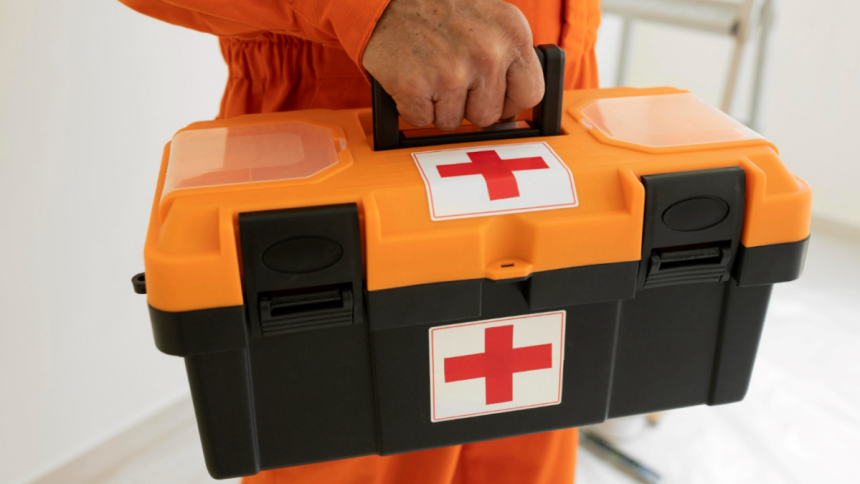Having an emergency plan is not just a legal requirement but also a moral obligation to ensure the safety of everyone in your office. Emergencies can strike anytime, whether a fire, natural disaster, medical emergency, or security threat.
Understanding the Different Types of Emergencies
Before you begin creating your emergency plan, it is essential to understand the different types of emergencies that could occur in your office. This knowledge will help you tailor your plan to address specific risks and challenges.
Common types of emergencies include fire, severe weather, medical emergencies, power outages, and security threats. By identifying these potential risks, you can develop appropriate response strategies and allocate the necessary resources to handle each situation effectively.
Identifying and Assessing Potential Risks in Your Office
The next step in creating an effective emergency plan is identifying and assessing potential risks in your office. Conduct a thorough workplace assessment to identify hazards such as faulty electrical systems, blocked emergency exits, flammable materials, and possible security vulnerabilities. It is crucial to involve employees from different departments in this process as they can provide valuable insights into the specific risks and challenges they face in their respective areas.
Once you have identified the risks, assess their potential impact and likelihood of occurrence. Prioritize the risks based on their severity and the potential harm they can cause. This will help you allocate resources and develop appropriate response strategies for each risk.
Creating an Emergency Response Team
An emergency response team is critical to executing your emergency plan effectively. This team should consist of designated individuals with specific roles and responsibilities during an emergency. Assign a team leader to oversee the emergency response and coordinate with relevant authorities. Other team members can be responsible for all employees’ tasks, such as evacuation, first aid, communication, and accounting.
Ensure that your emergency response team receives proper training on emergency procedures, first aid, and the appropriate use of emergency equipment. Review and update their training regularly to keep their skills up to date. Additionally, clear communication channels and protocols for the team must be established to ensure smooth coordination during an emergency.
Developing an Evacuation Plan
An evacuation plan is a crucial component of your emergency plan. It outlines the procedures and routes to be followed during an evacuation. Start by mapping your office space and identifying primary and secondary evacuation routes. Consider factors such as the location of emergency exits, stairwells, and assembly points outside the building.
Mark these evacuation routes with appropriate signage and ensure they are easily accessible and free from obstructions. Develop a floor warden system in which designated employees are responsible for guiding and assisting others during an evacuation. Conduct regular evacuation drills to familiarize employees with the evacuation routes and procedures.
Ensuring the Safety of Vulnerable People in Your Office
Every office may have individuals with mobility issues, disabilities, or specific medical conditions. Including them in your emergency plan and ensuring their safety during an emergency is essential. Identify these individuals in advance and develop personalized evacuation plans for them.
Consider providing an evacuation chair or other mobility aids to help individuals with mobility issues navigate staircases safely. Train designated employees on how to assist and evacuate individuals with disabilities. Regularly communicate with these individuals to understand their specific needs and address any concerns they may have regarding emergency procedures.
Providing Proper Training and Drills for Employees
An effective emergency plan is only as good as its implementers. It is crucial to provide proper training and conduct drills for all employees to ensure they are familiar with emergency procedures. Schedule regular training sessions to educate employees about different types of emergencies, evacuation procedures, and the proper use of emergency equipment.
During drills, simulate different emergency scenarios to test the effectiveness of your plan. Evaluate the performance of your employees and provide feedback to improve their skills. Encourage employees to participate actively in training and drills to instill a culture of preparedness in your office.
Choosing and Implementing Emergency Communication Methods
Effective communication is vital during an emergency. Effective communication ensures that everyone in your office receives timely and accurate information. Consider using public address systems, text alerts, email notifications, and dedicated communication apps.
Designate individuals responsible for communicating emergency information to employees and authorities. Ensure that these individuals have access to updated contact information for all employees and relevant emergency services. Regularly test your communication methods to ensure their functionality and reliability.
Using Evacuation Chairs for Individuals with Mobility Issues
Inclusive emergency planning involves providing appropriate measures for individuals with mobility issues. Evacuation chairs are essential to evacuate individuals who cannot safely use stairs. These chairs are designed to navigate staircases smoothly and can be operated by a trained individual.
Train designated employees on properly using evacuation chairs and ensure they are readily available in designated areas. Regular checks are conducted to ensure the chairs are in good working condition. Communicate the availability and location of these chairs to employees so they know the assistance available during an evacuation.
Reviewing and Updating Your Emergency Plan Regularly
Creating an emergency plan is not a one-time task. Reviewing and updating your plan regularly is essential to account for any changes in your office layout, staff, or potential risks. Conduct periodic drills and exercises to identify areas for improvement and address any gaps in your plan.
Encourage employees to provide feedback and suggestions for enhancing the emergency plan. Regularly communicate updates and changes to all employees, ensuring they know the latest procedures.
Following this step-by-step guide, you can create a comprehensive plan covering all aspects, from identifying potential risks to providing proper training and implementing communication methods. Remember to review and update your plan regularly to ensure its effectiveness.
Lynn Martelli is an editor at Readability. She received her MFA in Creative Writing from Antioch University and has worked as an editor for over 10 years. Lynn has edited a wide variety of books, including fiction, non-fiction, memoirs, and more. In her free time, Lynn enjoys reading, writing, and spending time with her family and friends.















